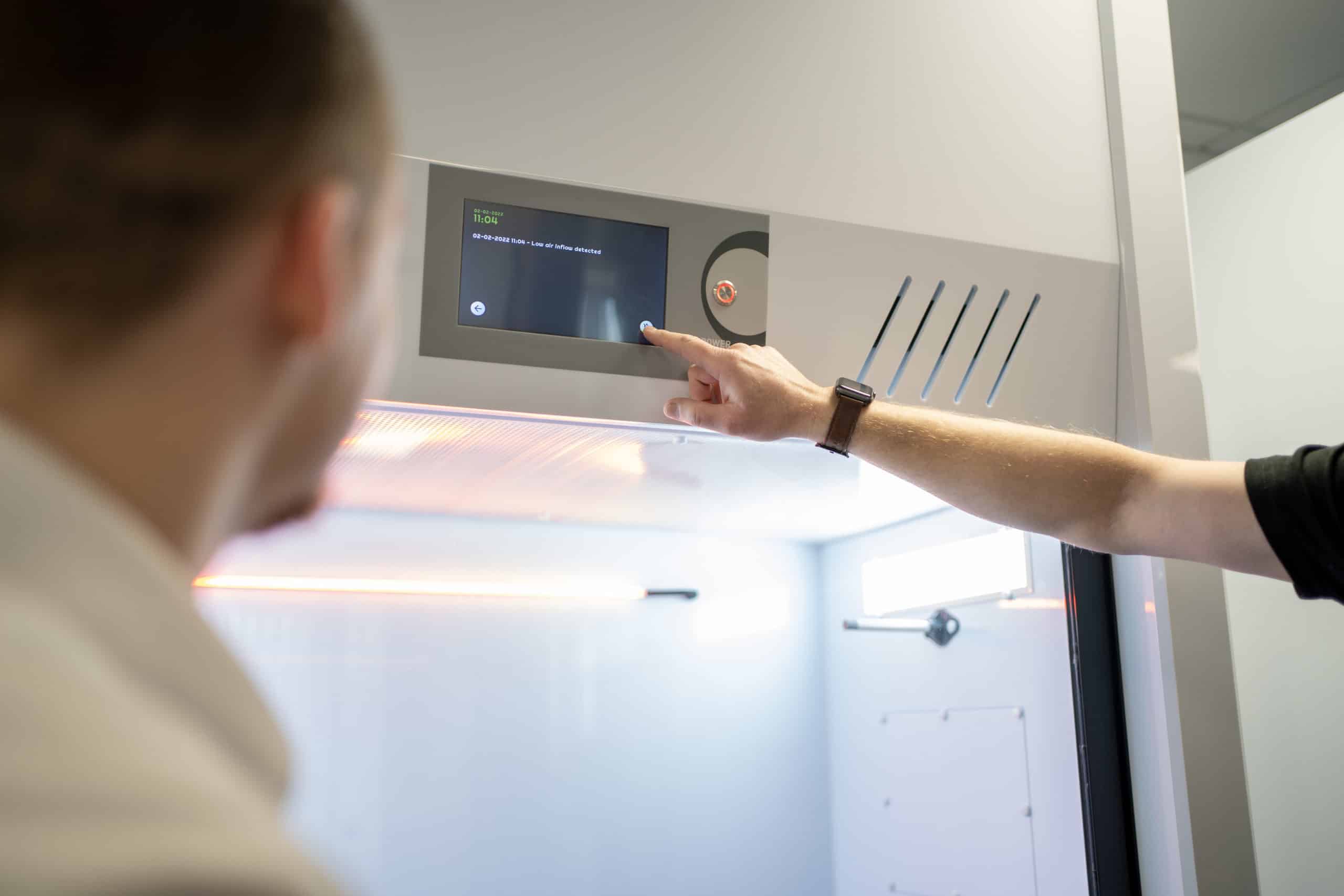
Laboratories dealing with poisonous gases or harmful chemicals require fume hoods as vital safety equipment items. By drawing air in through its face and pulling hazardous gases and fumes away from users and out of laboratories as exhaust, these cabinets reduce the chance of contamination.
The best fume cupboards keep employees as safe as possible in their working environment, and when workers are dealing with tracer gases and toxic chemicals, it stands to reason that there must be high safety standards in place.
Maintaining this equipment is critical to ensure it always works as its peak capacity. In order to guarantee this, your unit must be tested every year to meet legal requirements, and this testing standard is EN 14175 (The North American equivalent to this would be ASHRAE 100).
They come in different shapes and sizes to suit different laboratory applications. The units provide an enclosed environment in which technicians can work safely with chemicals and avoid contamination to other laboratory areas. Whatever fume hood type is being used, testing and certification is required annually.
OHSA standards require testing and certification of this type of chemical equipment at least once per year, and any new cabinet has to undergo testing immediately after installation and before its first use. If changes have been made to fume hood equipment, testing is required then too.
As a cupboard is vital to safety in the workplace, operators should inspect it visually, a minimum of once per day, including checks for blockages which could limit cleanliness and airflow.
Not only is it required by law to test and certify laboratory fume hoods, but it’s also important for locating and identifying any potential issues in the lab. The process of testing may uncover potential issues and risks with the HVAC system, equipment location or pressurisation – all issues which may result in hazards in the workplace, reduce productivity, and cause staff to become unwell.
There are three main areas covered by EN 14175 testing:
This test determines the face velocity level at various sampling points through the hood’s face. Thermal anemometers are used for EN 14175 as well as a rigorous sampling method which measures instantaneous velocity accurately.
Hoods that have VAV systems have face velocity testing performed at 3 sash opening positions – fully open, 50% open, and 25% open. There are 2 different methods for conducting testing – either the hood slot velocity or exhaust flow are measured.
Smoke patterns visualisation is a test that utilises visible smoke in order to assess patterns of airflow in the cabinet. The test is carried out with a large-volume challenge and local smoke generation, and in optimal conditions, smoke flows smoothly to the rear baffle’s slots. Large-volume smoke generation will show air patterns in the hood, while local challenges demonstrate the air flow just within the unit and around its opening.
This test simulates a laboratory technician using the fume hood and defines its ability to provide protection and contain chemical vapours. The test involves releasing SF6 tracer gas to check for any gas leakage within the breathing zone of the user.
A mannequin is used to represent the user with a probe placed within their breathing zone that runs to the analyser logging the concentration of tracer gas during testing. These three tests are vital to ensure that fume cupboards in laboratories are functioning as they should be, and keeping the workforce as safe as possible.
Read our Privacy Policy for more information on how we collect and process data.



No thank you
Read our Privacy Policy for more information on how we collect and process data.